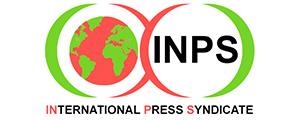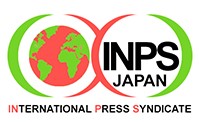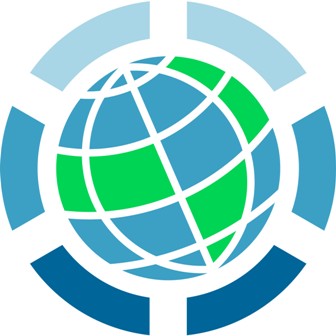By Hirotsugu Terasaki* | IDN-InDepth NewsViewpoint
TOKYO (IDN) – According to UNESCO, ESD (Education for Sustainable Development), is “about enabling us to constructively and creatively address present and future global challenges and create more sustainable and resilient societies.”
The Great Earthquake which shook East Japan in March 2011 served as an important impetus for me to rethink the idea of “resilient societies.” My organization, the Soka Gakkai, mounted major relief efforts soon after the disaster struck. Living in Tokyo, I found that the degree of direct damage was relatively minimal, however, two months after the quake I visited the disaster-stricken areas of East Japan. Towns there had been entirely engulfed by the tsunami waves and everything was swept away along much of the coastline. I was speechless as I saw the horrifying devastation which was beyond my imagination.
As head of Peace Affairs for the Soka Gakkai International (SGI), I devoted myself to meeting with as many victims as possible and listening to their experiences so that I could relate them to the outside world.

As I spoke to these individuals and heard their experiences, I came to an important realization. Those who were actively engaged in their community on a daily basis and were working for the betterment of their locality, demonstrating the kind of ideal community involvement encouraged in ESD; I noticed that these people showed powerful resilience in the face of tragedy. There were survivors who were still searching for their missing family members, but willingly taking up the task of helping others.
One individual who provided support to one of the evacuation centers was moved by the inner strength of the evacuees and said, “Disaster victims aren’t people who’re simply in need. Despite living each day in the harshest of conditions, many of them showed care for others and chose to take action to help them.”
For example, when relief supplies were delivered to the center, evacuees took the initiative to ensure that the goods went to the most needy first, instead of demanding equal distribution. At times, they delivered the goods to victims who couldn’t seek shelter in the evacuation center and were stranded in their homes. Some even acted as mediators when conflicts occurred among evacuees inside the crowded shelters.
Three years have passed since this unprecedented calamity. However, the disaster areas are still struggling to find a path toward rebuilding their communities. Survivors are still facing various problems related to employment and housing. And the critical public debate surrounding the issue of nuclear power continues.
Following the quake disaster, I sense that Japanese public awareness is clearly shifting. It’s now placing a higher priority on sustainability. Discussions involving future development of communities now focus on rebuilding societies that can nurture people-to-people bonds and co-exist with nature, instead of merely focusing on economic and material revival.
“Recovery” efforts must place importance on the revitalization of human beings. Individuals have developed a clear awareness that for that kind of recovery to take place, people-to-people, and people-to-environment relationships need to be given more consideration. Current post-disaster restoration efforts will enable us Japanese to realize the elements that are necessary for strengthening community resilience.
Currently, the young members of the Soka Gakkai are engaged in a project of sharing their experiences of overcoming difficulties in the aftermath of the earthquake and on how this has led to their inner transformation. We’re engaged in this manner with the confidence that it’s through people sharing experiences of embodying “resilience;” by sharing episodes related to the human spirit that we’ll be able to create more sustainable and resilient societies that ESD aims for.
I myself have always felt the need for ESD because it will benefit humankind into the mid- and long-term future. However, in today’s world where we’re constantly subject to the dangers of sudden deprivation, there’s a need for us to develop the ability to work together beyond national borders in a spirit of shared responsibility for the challenges we face.
One of them is the quality that ESD aims to foster; that is, the ability to perceive things from a comprehensive standpoint and to empathize with others beyond time and spatial differences. This ability is expressed in the fourth principle of the Earth Charter as “Secure Earth’s bounty and beauty for present and future generations.”
Global citizenship education
How are we to foster this ability in our day-to-day educational efforts instead of realizing it after a crisis? I’d like to highlight the idea of “global citizenship education” which is the theme for a later session, and is also mentioned in the global action program following DESD.
For many years now, SGI President Ikeda has proposed educational initiatives aimed at cultivating awareness for global citizenship on the community level.
In 1987, he suggested 4 concrete action areas related to the human values of the environment, development, peace and human rights in an effort to promote education for global citizenship. Furthermore, the SGI has been engaged in grass-roots efforts to raise public awareness over many decades.
Then two years ago at Rio+20, the SGI organized a roundtable discussion. Participants found value and importance in education for global citizenship as a way to break down silos and provide a forum for collaboration.
SGI President Ikeda issued his annual peace proposal in which he puts forward that a new program of education for global citizenship be launched in a collaboration between the UN and civil society. He suggests that this happen as a follow-up to the Decade of ESD and incorporate it in the post 2015 agenda.
The new program that’s being proposed is similar to the kind of targeted program that was implemented in different countries when the UN’s World Program for Human Rights Education was developed during an experimental phase following the UN Decade for Human Rights Education. In that sense, it would be ideal if the following three principles be reflected in the targeted program following the Decade of ESD
1) Education that fosters the shared hope and confidence that problems, owing to their human origins, are amenable to human solutions;
2) Identify the early signs of impending global problems in local phenomena, and empower people to take concerted action; and
3) Education that will elevate the resolve of not seeking one’s happiness and prosperity at the expense of others to a shared pledge.
These points are key elements emphasized in the exhibition “Seeds of Hope” which we created in collaboration with Earth Charter International. A part of this exhibition has been shown in the garden here since yesterday.
With the cooperation of our local SGI organizations, this exhibition has been shown in 30 countries around the world. The point of the exhibition is not for the display’s creators to attempt to “teach” something from outside to the hosting location, but aims to engage the hosts and visitors to consider local issues and act to bring about improvements on the ground.
For instance, when we opened this exhibition in Brazil in conjunction with the Rio+20 summit, the local SGI-Brazil members adding their own section of 10 panels stands as a good example of this.
Sustainable development is a “grand idea” that is somewhat removed from people’s daily lives. The very process of citizens of a given locality introducing examples that they’ve selected based on their experiences and perspectives and sharing them in an exhibition — this in itself is an opportunity to gain first-hand experience learning about an issue, reflecting on it and being empowered through acting on it.
Finally, as a member of civil society, we hope to continue our efforts to further promote ESD activities and foster global citizens who see the importance of thinking globally and acting locally to tackle the issues of their region.
*Hirotsugu Terasaki is Executive Director of Peace Affairs at the Soka Gakkai International. This Viewpoint is extracted from his remarks at a two-day conference titled ‘Ethics for Sustainability: New Perspectives on Leadership, Decision Making and Education’, co-organized by Earth Charter International and the University for Peace (UPEACE) at the latter’s campus near San Jose, Costa Rica, early February 2014. Leaders in the sustainability field, including Earth Charter Commissioner and former Prime Minister of the Netherlands Ruud Lubbers, Minister of Culture and Youth of Costa Rica Manuel Obregón, ambassadors to Costa Rica from several countries, and representatives from UNESCO and UNDP attended the events. [IDN-InDepthNews – February 22, 2014]
2014 IDN-InDepthNews | Analysis That Matters
Photo: Hirotsugu Terasaki


